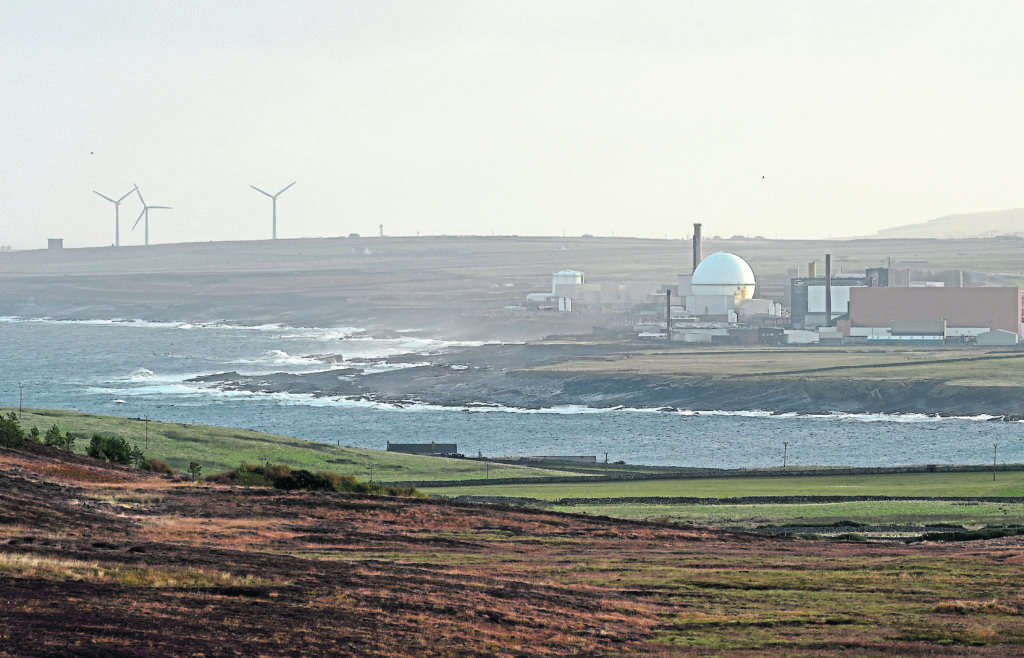
Suppose that Edinburgh’s prospects were so dire that its population was projected to nosedive by a fifth in 20 years.
This would be treated as a national crisis. The central belt media would have space for little else.
Politicians, pundits, experts of all sorts would line up to offer remedies. Taskforces would proliferate.
But Scotland’s far north doesn’t rate the kind of attention Edinburgh gets automatically.
What happens there is routinely ignored in the country’s capital, where precious little notice has been taken of the revelation, contained in Highland Council’s latest corporate plan, that Caithness is on track to lose 21% of its population by 2041.
As if by way of confirming that Caithness is on the slide, recent days have seen the demise of the Caithness Horizons museum and art gallery, news of pub sales and club closures in Wick and a suggestion that Wick Airport’s opening hours might be cut.
All of which helps explain the furious far north reaction when last week’s meeting of Highland Council – a meeting that might have been expected to grapple with looming demographic disaster in Caithness – was confronted by a proposal that the council become one of Britain’s self-designated Nuclear Free Local Authorities.
Irrespective of the pros and cons of nuclear power, the floating of such a suggestion at what is a tough time for Caithness has shown next to no awareness of nuclear energy’s key role in rescuing the area from earlier challenges every bit as acute as those confronting it today.
Time was when Caithness prospered on the back of two hugely successful enterprises. One was the trade in salted or cured herring – a trade that turned Wick into a boom town. The other was the quarrying in Caithness of
millions of flagstones that went into city pavements across Britain and beyond.
During the 1920s and 30s, both those industries collapsed. Crucial markets for cured herring in Russia and in Germany were lost to war and revolution.
Mass-produced concrete slabs proved a cheap alternative to flagstones. Thousands of Caithness jobs were lost and the place was gripped in a downward spiral similar to the one that is forecast at present.
But then, in the 1950s, Dounreay became the testbed for nuclear technologies in which Britain, at that time, led the world. Overnight the far north’s fortunes were transformed. As big numbers of high-paid jobs were created and thousands of homes built to house Dounreay staff, Thurso’s population tripled and Caithness gained new schools, a college and other equally welcome facilities.
Now Dounreay’s being decommissioned and, as Highland Council’s population forecasts show, it begins to look as if much of the rest of the Caithness economy is being decommissioned with it. So what is to be done?
One starting point would be the restoration to Caithness of some of the array of decision-making powers the area has lost in recent decades.
Caithness County Council was abolished by one UK government in the 1970s. The downgraded district council that took the county council’s place was itself abolished by another UK government in the 1990s.
Then, in 2008, a Scottish government got rid of the last vestige of Caithness autonomy by terminating the existence of the local enterprise company Caithness shared with Sutherland. Relentless centralisation of this sort – centralisation paralleled in health service provision and much else – has not just deprived Caithness of employment.
It’s meant that a part of Scotland with its own history, its own culture, its own distinctive dialect and its own strong sense of itself has been left with not a single administrative institution through which these things can be expressed.
As a way of undermining Caithness people’s collective self-confidence this process could scarcely be bettered. So why not, by way of an experiment that could have repercussions for similarly neglected localities elsewhere, put all this into reverse?
Suppose the Scottish Government, which has the necessary powers, was to extricate Caithness from Inverness-based Highland Council and reinstate its local authority.
Suppose, at the same time, Caithness were to be hived off from Inverness-based Highlands and Islands Enterprise and given its own development agency. And suppose Caithness General Hospital, forever fighting off threats of run-down and closure, was to be taken out of the jurisdiction of Inverness-based NHS Highland and, along with associated services, turned over to a Caithness health board.
Comprehensive devolution of this sort would bring lots of long-lost jobs back to Caithness. The resulting increase in local spending power would be worthwhile in itself.
Still more valuable would be the morale-boosting impact of putting Caithness’s future firmly in the hands of Caithness’s own residents.
The Scottish Government is very much of the opinion that the country as a whole would benefit from having more control of its affairs. Why should places like Caithness be any different?
Why, if it’s wrong to have decisions about Scotland taken in London, is it perfectly OK to have vital decisions about Caithness taken in faraway Inverness forums where the Caithness voice is necessarily in a permanent minority?
It’s time, perhaps, for Holyrood ministers to respond to Caithness’s mounting problems by practising a little of what they preach.
Jim Hunter is a historian, award-winning author and Emeritus Professor of History at the University of the Highlands and Islands